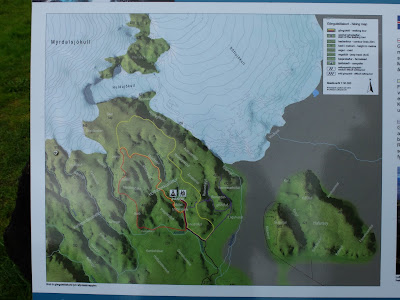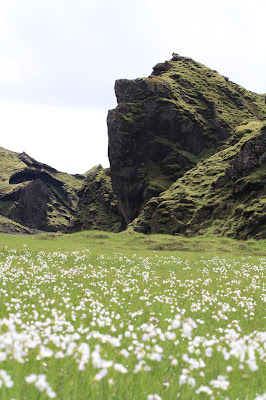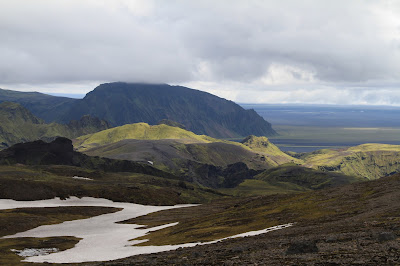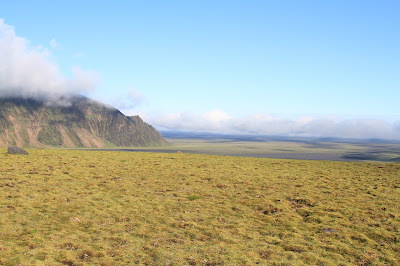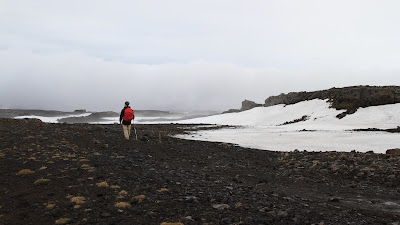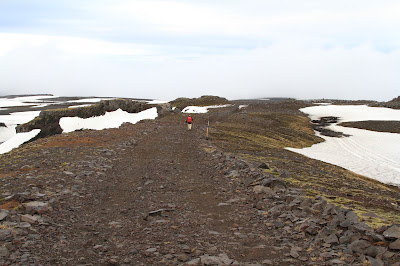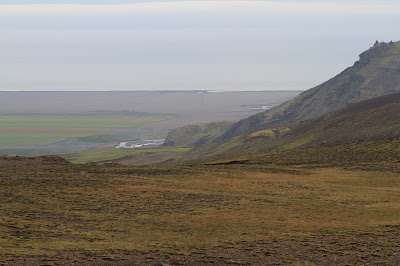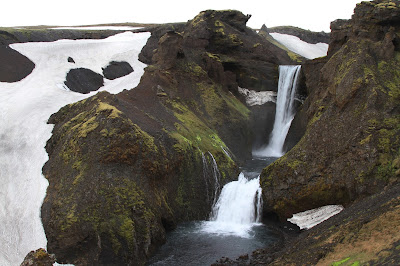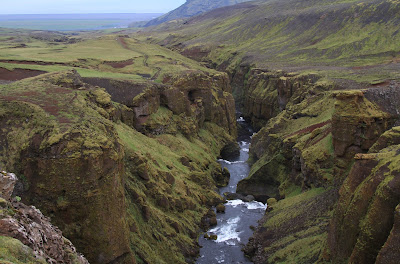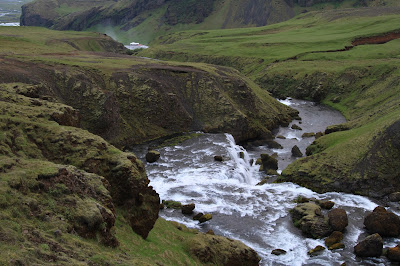"Caw, Caw, Caw!"
"Shit." I rub my eyes and throw back the covers.
6:00 am. A Seattle Spring morning and the crows wake me up again. My partner, oblivious to the caw-cophony continues sleeping. The crows might even figure into a pleasant dream for him. Not for me. I get out of bed wondering how will I cope today in a world of noise?
What noise?
I'm talking about noise in the pejorative sense: unwanted, disruptive, ugly, loud for loud's sake, and sometimes against the law. Noise the spoiler of my concentration. Noise not produced by me. Noise that irritates.
Garret Keizer, in
The Unwanted Sound of Everything We Want, captures the subjective nature of noise this way: "we know it when we hear it."
Crows are my unwanted noise. So are booming car stereos, deafening after-market mufflers, thumping bass through a floor, babbling televisions in airports, drumming of fingers, popping of gum, slamming of doors, and wind chimes. If none of those sounds annoy you, my earplugs are off to you.
I wrestle with my response to unwanted noise because noise precipitates awkward behavior. I'm worried about becoming a noise crank. Several years ago, I began to, at first serendipitously, and then more directed, read about noise. I found solace in the anecdotes of how historical personalities confronted unwanted noise.
Two Signposts
Street music rankled the English mathematician and "father of the computer" Charles Babbage (1797 - 1871). His 1864 autobiography
Passages from the Life of a Philosopher contains a chapter,
Street Nuisances, which lays out his contempt of street musicians, in particular Italian organ grinders. Babbage made his unwanted noise issue into one of class and education. Intellectual workers - like himself - were harassed by noise while those with "frivolous pursuits or with any other pursuits requiring but little attention from the reasoning or the reflective powers" welcomed noise.
Babbage lashed out at the noisemakers. He yelled at them, urged the police to pursue them, and prosecuted them in court. They returned the favor. Babbage wrote, "[T]he crowd of young children, urged on by their parents, and backed at a judicious distance by a set of vagabonds, forms quite a noisy mob, following me as I pass along, and shouting out rather uncomplimentary epithets. When I turn around and survey my illustrious tail, it stops; if I move toward it, it recedes; the elder branches are then quiet - sometimes they even retire, wishing perhaps to avoid my future recognition. The instance I turn, the shouting and the abuse are resumed, and the mob again follow at a respectful distance."
It is reported that on his deathbed, Babbage endured an organ grinder outside his window.
Babbage's life spanned the Georgian and Victorian periods in London, at the time one of the largest and noisiest cities in the world. It is true that London street musicians, typically immigrants, did play until you paid them to leave. Their noise disturbed Babbage, but was his method for dealing with it something I see myself adopting for my unwanted noises?
A half of century later in 1906 America, tug boat whistles on the Hudson River kept Julia Barnett Rice (1860 - 1929), a New York physician and philanthropist, awake at night. On any given night there could be a thousand or more whistles penetrating her Riverside Drive bedroom of Villa Julia. Sick of sleepless nights, Rice fought back. She took noise measurements, collected statements from people impacted, and waged a campaign for the suppression of unnecessary noise all the way to Washington D.C., and she won.
Rice's New York City took over the mantle of the largest and noisiest city in the world from Babbage's London. The whistles Rice silenced were from tugs carrying material and debris from the expanding city. Rice took a pro-business approach, knowing that much noise was unavoidable, but that excess noise could be framed as inefficient as well as "hurtful to humanity".
Beyond tugboat whistles, Rice shined a line on the issue of noise outside of hospitals and the general noise levels of the city. She educated by not just telling people about noise, but showing them. She recorded and played the noise back to audiences. A 1908 New York Times article,
Canned Din by Phonograph, gives a taste of one of her 'concert events', a "record that will give outsiders some idea of New York's din furnished a duet between an elevated train at Fifty-ninth Street and Columbus Avenue and a flat-wheel surface car."
I calculate that Rice made a difference in dealing with her unwanted noise as well as benefiting society. Babbage comes off as cranky. A man targeted because of his response to noise. Is my response to noise more Rice or Babbage?
Chamber of Quiet
Crow 1: "Look who's here."
Crow 2: "The guy who flaps his arms at us."
Crow 1: "What's he doing now? What's he holding up?"
Crow 2: "I hear the sound of an eagle, or is it a falcon? But I don't see one."
Crow 1: "What a strange and noisy creature he is."
Crow 2: "Let's get his attention."
Together: "Caw, caw, caw!"
My partner watches and shakes his head. A bit of a Babbage moment except instead of organ grinders it’s crows. My attempt to scare the crows away with the "Crow Be Gone" soundtrack - a product reputed to repel crows by repeating the sounds of their predators - doesn't work. I put the soundtrack on my phone - portable crow-repellency I thought. I feel silly trying to scare crows away by making them think they are under attack, all because I feel under attack by the noise they make.
11:00 pm. Summer. The noise of a Saturday night party penetrates into our basement bedroom, which is half submerged underground, protected by thick walls and double-paned windows. It's usually relief from outside noise but not tonight.
I pass the time before sleep wondering what it would be like to create a quiet place to sleep without white noise generators or silicone earplugs. I could design my own anechoic ('echo-free') chamber, like the one at Orfield Labs in South Minneapolis. The 12 by 12 chamber is the quietest place on earth according to Guinness World Records. The chamber's walls sprout brown fiberglass wedges, which alternate horizontally and vertically in orientation. The floor is cable-mesh suspended over more of the same brown wedges. The fractal-like surfaces look nightmarish but provide ample surface area to absorb noise.
The chamber was built for product testing and registers negative decibels, -9.4 dBA. Zero decibels is the point at which you begin to hear. A quiet bedroom or library is about 30 decibels. At negative decibels your body becomes the sound.
The longest that anyone has remained in the chamber is reported to be 45 minutes. The challenge is one of orientation; we use sound to orient ourselves and that room robs soaks it all up.
An idea begins to take form in my mind: perhaps you can never escape noise.
Cranky Behavior
Noise impacts me beyond an occasional crow gathering or a joyrider with a new fat-boy muffler. When I plan a trip and look for hotel rooms, fear-of-noise is my travel agent. I construct mental blueprints of hotels, calculate distances to elevators, stairwells, and ice machines. Can I get a top floor so no one is above me? Good. Do TVs in adjacent rooms share a common wall with a bed? Bad. Do the pictures of the room look like they are insulating from sound? Good.
My partner puts up with my ruminations which turn to machinations once we arrive at a hotel and I get the true lay of the land. The diagram on the back of your hotel room door is there to help you find a fire exit. I study it for possible room swapping opportunities and get angry when it's a hand drawn approximation of the true layout. If you were staying in the hotel, you might hear me babbling as I wander the halls: "Room 204 must be a quiet room. Look at it, isolated at the end of the hallway. And, there's no room above it."
My in-laws are happy we come to visit. They said nothing when during our first visits I incapacitated their wind chimes with white tube socks. When visiting us, they accept my Napoleonic declarations: no door slamming or dryer usage after 10 pm.
At work, I sit cheek to jowl with my colleagues, and noises grate on my nerves. I can't be a noise tyrant as at home, so I escape. I book conference rooms for meetings with myself.
Record Breaking Noise
"Go Hawks!" A touchdown for the Seattle Seahawks.
We are at a Super Bowl 49 party, in a basement rec room. A big screen TV dominates one end of the room. Twenty-five friends gather to cheer on Seattle. The windows are steamed up. Seattle green and blue are everywhere: in clothes, face paint, wigs, pom-poms, party streamers and donuts. Some friends sit on a large couch sprawled in front of the TV, others are too nervous to sit. Three friends are in the "prayer corner" clutching each other.
I measure the noise in the room at an average of 100-110 decibels. My decibel meter offers that it's the same as listening to power tools. For the duration of the game, we are in a wood shop.
A prayer-corner friend controls the volume of the TV. She cranks it up when an important play is coming up or we need to focus or the prayers aren't working. We hit 125 decibels – jackhammer – we moved from wood shop to construction crew. The volume of the sound keeps everyone in a heightened sense. My ears ring for hours after the game has finished.
I imagine channeling Julia Barnet Rice and educating my friends (during a commercial break naturally). "Did you know that quite possibly some of the fine hairs of your inner ears - making hearing possible - have just died, never to grow back?" Or "Sounds above 85 decibels for extended periods of time can permanently damage your ears." But I don't and instead reach for a blue and green donut.
Noise Wake Up Call
7:00 am. Winter. The world is still asleep; I'm half asleep. I sit at my desk in socks, underwear, and an oversized sweatshirt staring at the gray outside. The radiator hisses and the house creaks as water flows through pipes. I imagine our house - with it creaks and groans - as a ship afloat on a sea of noise.
The sound of a distant plane edges into my consciousness for a few seconds and then fades. This morning, there are no crows. No fire engines or ambulances. No blaring stereos. No wind chimes. Just comforting sounds and the absence of unwanted sounds.
Yet, it's a temporary respite. The world will wake up and the sound level will increase. Sounds will become my unwanted noise. The best case scenario is that I won't notice it because I'll be busy and the total sound level will rise to drown out what bothers me. The worst case scenario is that I'll get irritated, then cope, and maybe even create my own noise.
I think of how Julia Barnett Rice and Charles Babbage responded to noise, proactively and reactively, respectively. I'm somewhere in the middle. My mind wanders to Seneca (c. 4 BC – AD 65), a Roman Stoic. He lived above a spa and describes the noises that irritated him in the essay
On Noise including the hair-plucker's voice, "continually giving it vent and never holding his tongue except when he is plucking the armpits and making his victim yell instead." He gives this advice on dealing with noise: suck it up and calm the turmoil inside. I think of the Stoic's response to the old saw "shit happens," which is, "This shit is good for me." Maybe some noise is.
7:05 am. I yawn and stretch. Suddenly, "Varoom!" Out of nowhere a motorcycle roars up the street. It sets of a car alarm. My first test of the day.


